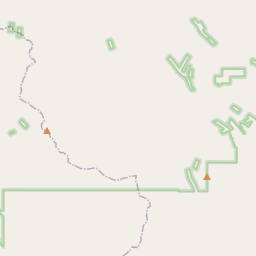W.H. Watt Building
Historical marker location:
120 North Main Street, Hailey, Idaho
( Marker is at the intersection of North Main Street and Carbonate Street, on the right when traveling north on North Main Street.)







© OpenStreetMap contributors
120 N. Main St
Loading...
Searching for other points of interest within 3 miles of this location.Idaho is known for its potatoes, but it wasn't until the 1930s that potatoes became a major crop in the state. Before that, wheat was the primary crop grown in Idaho.
About Blaine County
Blaine County Timeline
Blaine County, Idaho, is a region with a rich history that dates back thousands of years. The area was first inhabited by Native American tribes, including the Shoshone, Bannock, and Nez Perce people. They lived off the land, hunting, fishing, and gathering resources for survival.
In the early 1800s, European fur trappers and traders arrived in the area, establishing trade routes and interactions with the Native Americans. The Lewis and Clark Expedition in 1805 further explored and mapped the region, bringing attention to the area's natural resources and potential for settlement.
Blaine County experienced a significant influx of settlers during the late 1800s due to the discovery of gold and silver deposits. Mining camps sprung up throughout the region, attracting fortune-seekers and contributing to the growth of towns like Hailey and Ketchum. At its peak, the county had over 80 active mines, and mining played a pivotal role in shaping the economy and development of the area.
In the early 1900s, the mining industry declined, leading to a shift in Blaine County's economy. The region transitioned into an agricultural hub, with farmers cultivating crops like potatoes, grain, and hay. The area's natural beauty and recreational opportunities also drew tourists, particularly to renowned destinations like Sun Valley, which became a popular ski resort in the 1930s.
Today, Blaine County continues to balance its agricultural roots with a thriving tourism industry. The county is known for its outdoor recreational activities, including hiking, mountain biking, skiing, and fishing. It also hosts annual events and festivals that celebrate both its historical and cultural heritage, providing visitors with a glimpse into its diverse past.
In the early 1800s, European fur trappers and traders arrived in the area, establishing trade routes and interactions with the Native Americans. The Lewis and Clark Expedition in 1805 further explored and mapped the region, bringing attention to the area's natural resources and potential for settlement.
Blaine County experienced a significant influx of settlers during the late 1800s due to the discovery of gold and silver deposits. Mining camps sprung up throughout the region, attracting fortune-seekers and contributing to the growth of towns like Hailey and Ketchum. At its peak, the county had over 80 active mines, and mining played a pivotal role in shaping the economy and development of the area.
In the early 1900s, the mining industry declined, leading to a shift in Blaine County's economy. The region transitioned into an agricultural hub, with farmers cultivating crops like potatoes, grain, and hay. The area's natural beauty and recreational opportunities also drew tourists, particularly to renowned destinations like Sun Valley, which became a popular ski resort in the 1930s.
Today, Blaine County continues to balance its agricultural roots with a thriving tourism industry. The county is known for its outdoor recreational activities, including hiking, mountain biking, skiing, and fishing. It also hosts annual events and festivals that celebrate both its historical and cultural heritage, providing visitors with a glimpse into its diverse past.
Blaine County Timeline
This timeline provides a concise overview of the key events in the history of Blaine County, Idaho.
- 1804 - The Corps of Discovery expedition, led by Lewis and Clark, passes through the area.
- 1862 - Prospectors discover gold in the area, leading to a rush of miners.
- 1864 - Blaine County is established and named after John Blaine, a congressman from Indiana.
- 1872 - The town of Hailey is founded as a mining camp.
- 1880 - The Sawtooth Mountains are surveyed, leading to increased interest in the area.
- 1887 - The Oregon Short Line Railroad reaches Hailey, bringing greater accessibility to the region.
- 1910 - The Wood River Valley experiences a population boom due to mining and logging activities.
- 1937 - The Sun Valley Resort is opened, attracting tourists and boosting the local economy.
- 1964 - The Sawtooth National Recreation Area is established, preserving the natural beauty of the region.
- 1980 - The Sun Valley Ski Resort hosts the Nordic events of the Winter Olympics.
- 2010 - The population of Blaine County reaches over 21,000 people.